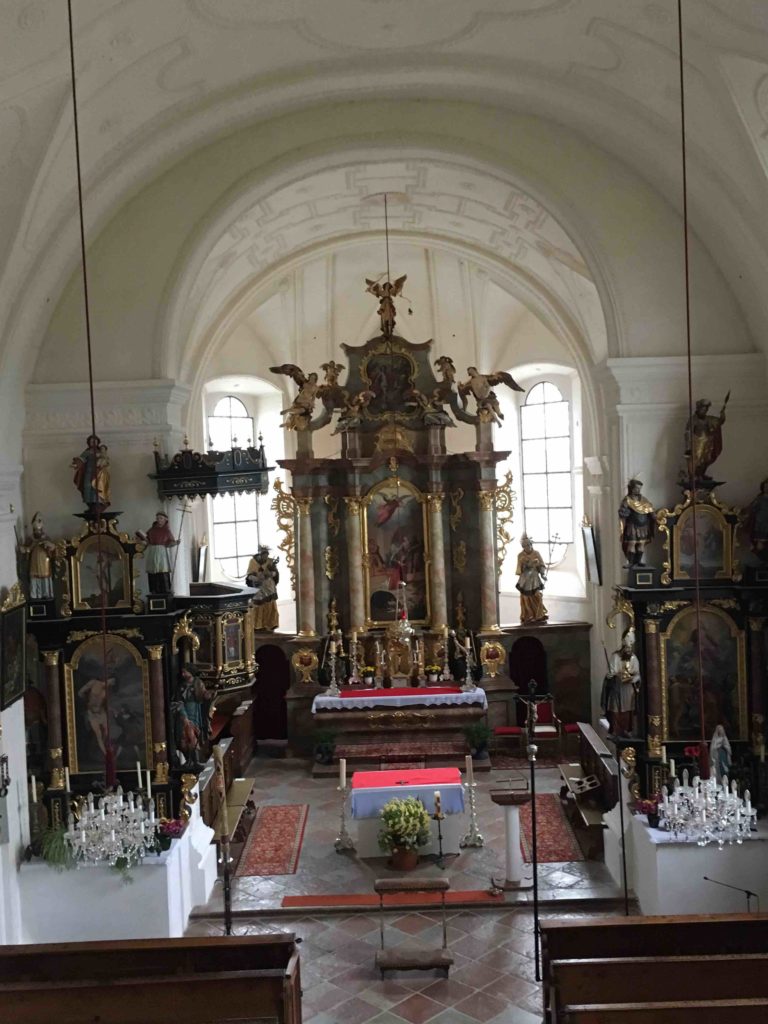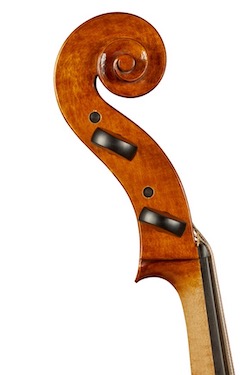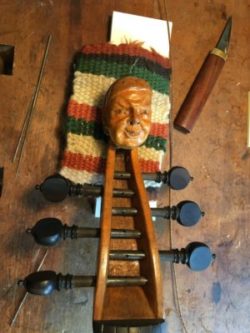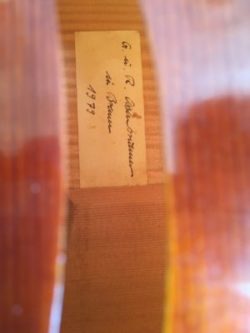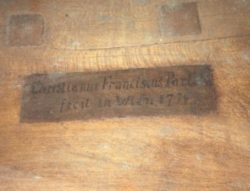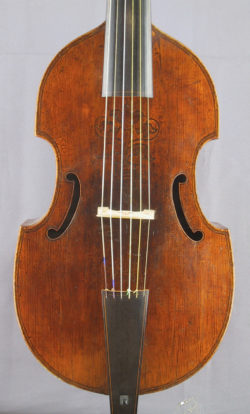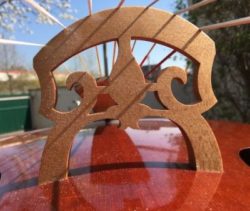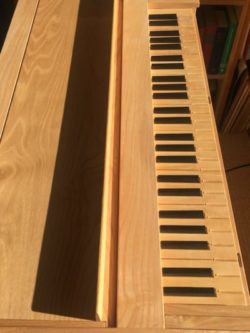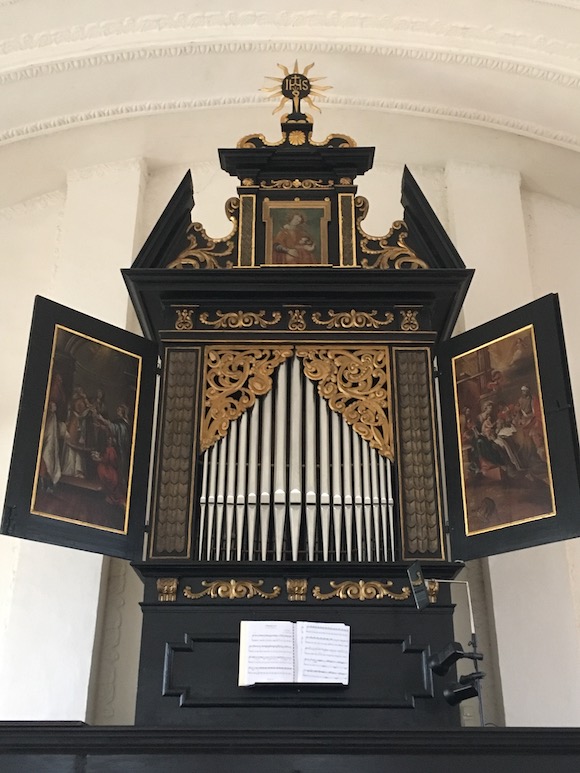
On the gallery of the parish church St. Stephanus in Vormoos (Austria) an organ built in 1662 by Hans Vogl has survived nearly unaltered to this day. The organ has five stops on a single manual: gedackt 8′, principal 4′, flute 4′, octave 2′, mixture II (»Copl 8′, Principal 4′, Flöte 4′, Octave 2′, Mixtur II«).
Neither Vogl’s birth date nor the year of his death are known. According to Christoph Großpietsch (1) Vogl is mentioned as an organ builder in the city of Traunstein (Bavaria) in 1633. In the 1640s he moved to Neuötting, where the birth of his daughter Helena is documented in the church archive. Vogl is identified as »Joannes Vogl, organarius, civis« (»Joannes Vogl, organ builder [and] citizen«)
Apart from the instrument in Vormoos another small, very well preserved organ by Hans Vogl stands in Ettendorf near Traunstein (St. Vitus & Anna, 1669). This instrument was restored in 2005 by the organ maker Alois Linder (Nußdorf am Inn) and exhibits many similar features to the organ in Vormoos.
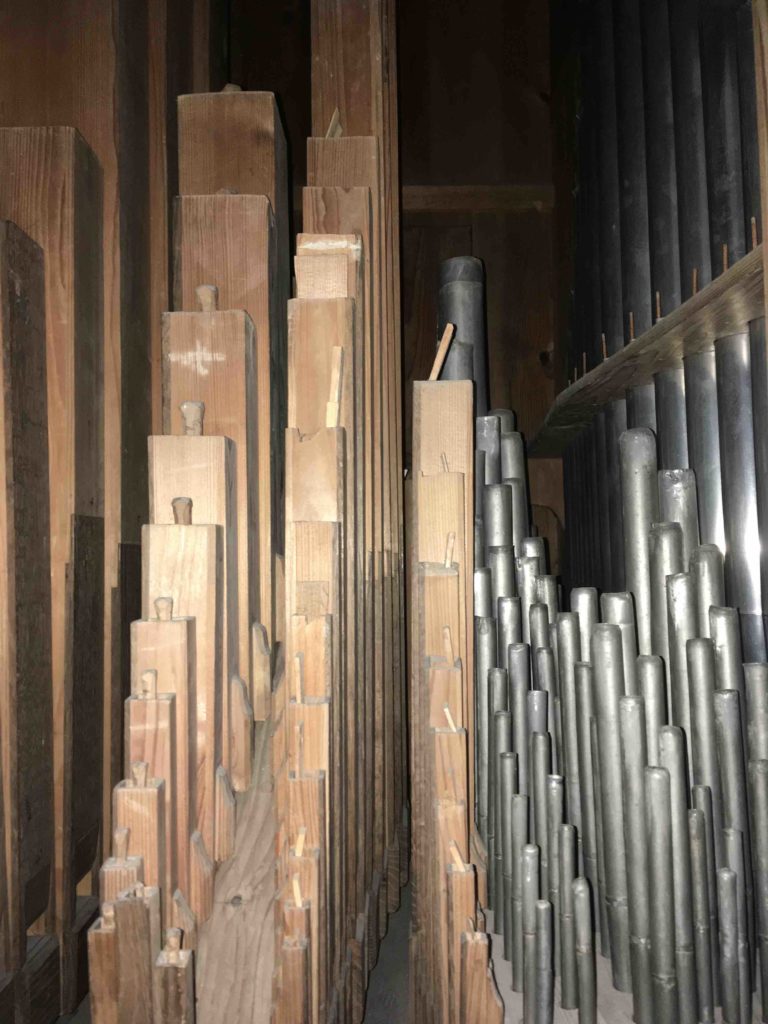
The organ in Vormoos still includes a large proportion of the original pipes and, extraordinarily, the bellow construction has survived unchanged (today an additional electrical motor has been integrated).
The organ was restored in 1981 by Bruno Riedl (Linz) and underwent another repair in 2002 by Orgelbau Kuhn.
(1) Christoph Großpietsch, “Der Orgelbauer Hans Vogl – Sein Wirken in Südostbayern und im Innviertel”, in Die Hans-Vogl-Orgel zu Ettendorf (1669), ed. by Christoph Großpietsch and Manfred Müller, Traunstein 2005, p. 25–31.
Bibliography: Rupert Gottfried Frieberger, Der Orgelbau in Oberösterreich im 17. und 18. Jahrhundert, Innsbruck 1984 ••• Christoph Großpietsch and Manfred Müller (eds.), Die Hans-Vogl-Orgel zu Ettendorf (1669), Traunstein 2005.
